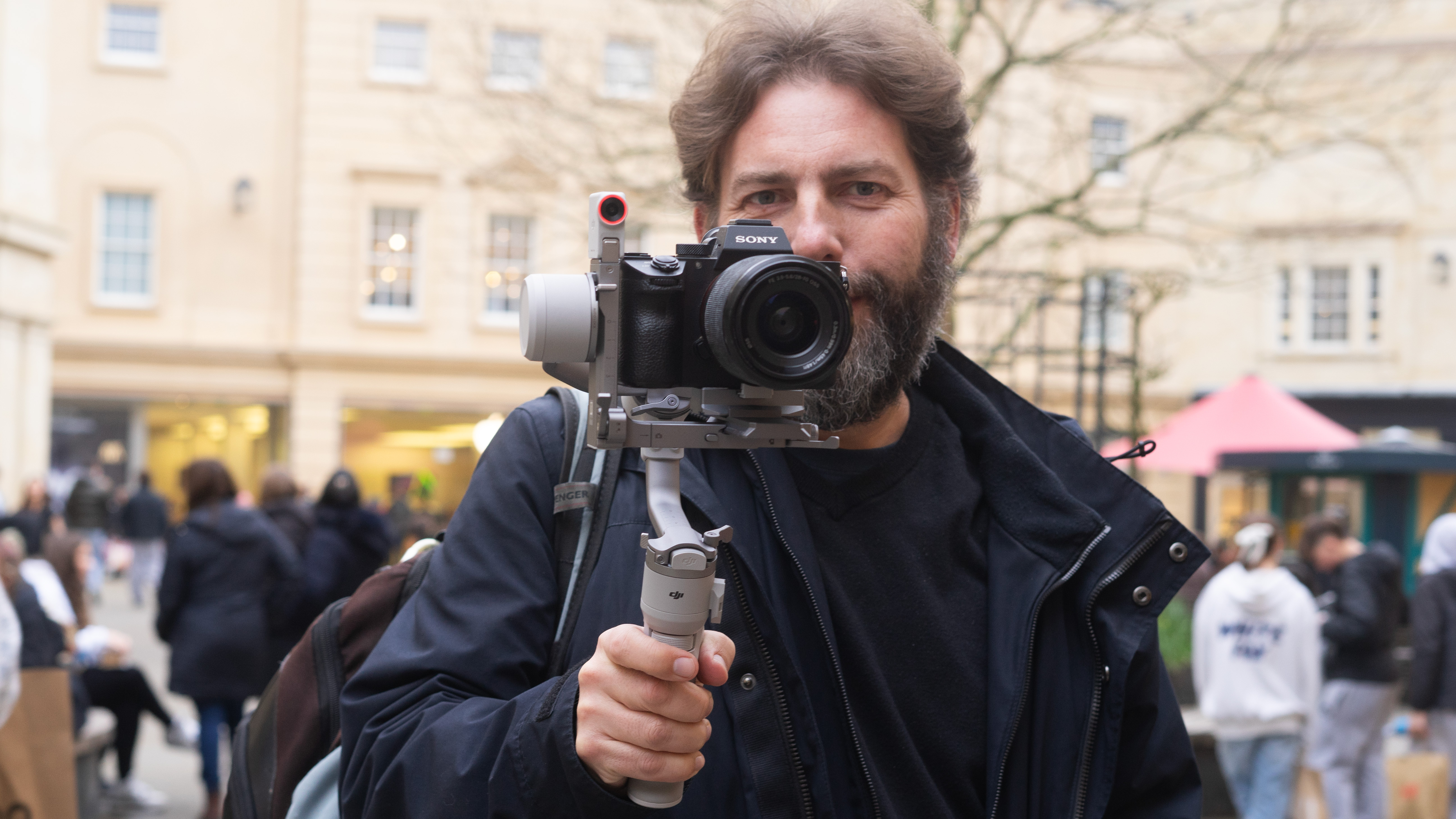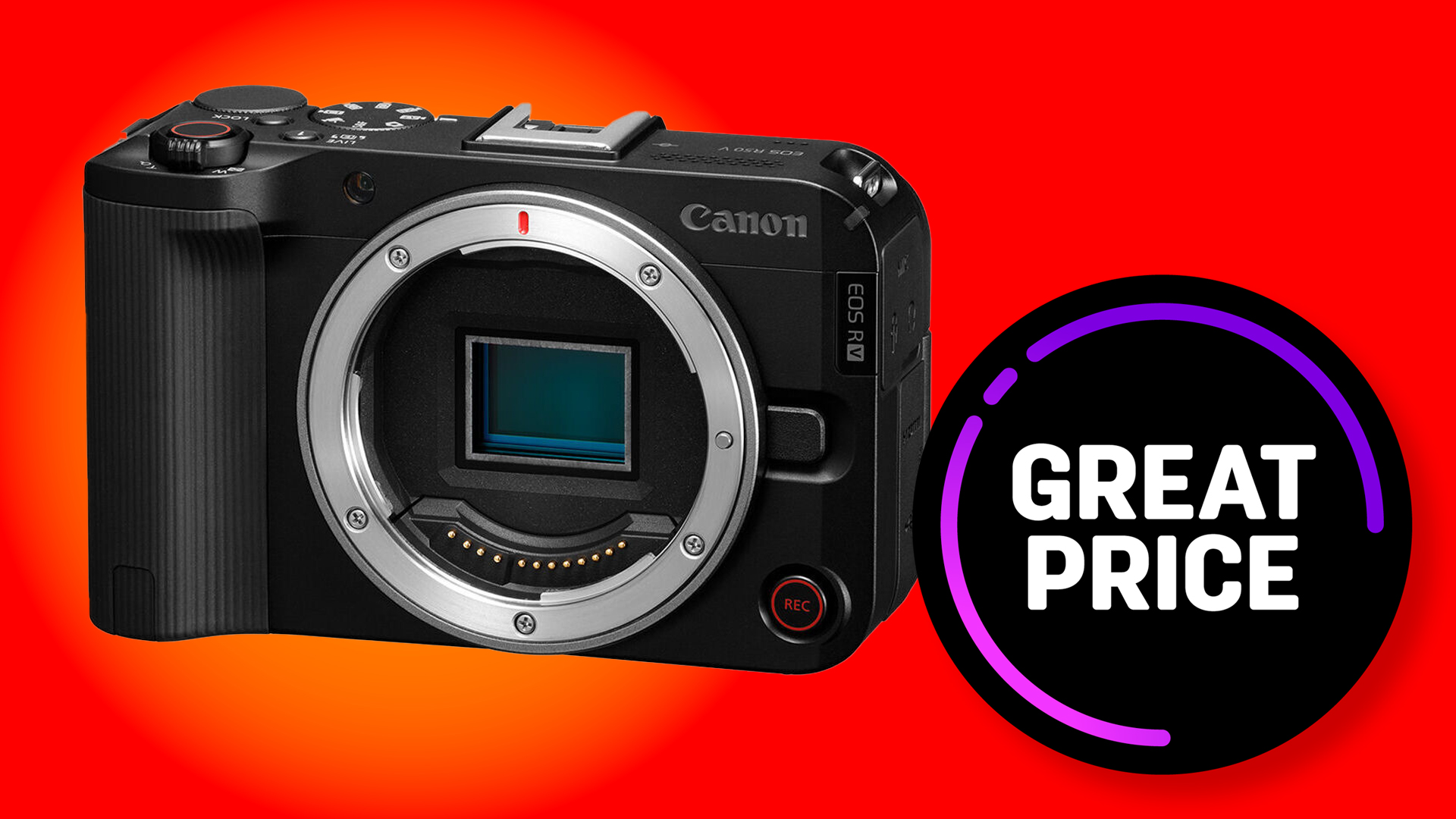Digital Camera World Verdict
Brilliantly powerful, the arrival of powered auto-locking on the 'Mini' means that, if the payload is sufficient, this really feels like a pro device.
Pros
- +
AI subject tracking module
- +
Brilliant automated locking system
- +
Pro-grade stabilisation
- +
Surprisingly portable
Cons
- -
Insists on smartphone sign-up
- -
Needs rebalancing for vertical
Why you can trust Digital Camera World
There was a time when gimbals felt a little like a niche product, but any content creator should now have one in their arsenal, and DJI has stepped up with a range of straightforward yet powerful devices which are able to communicate with a surprising number of cameras and track subjects with AI. The flagship is the RS 4, and this includes a lot of the same tech for a much lower asking price.
The fact that the device supports phones (using an optional holder) as well as cameras means it's suited to influencers, solo creators, and freelance videographers who tackle jobs like weddings. It can comfortably support popular pro video-friendly mirrorless cameras like the Sony A7 III that I was testing with, not just compacts.
In essence, this is a professional gimbal which can cater to 'prosumer' grade equipment. The giveaway is the arrival of automatic axis locks and physical switches for the gimbal modes, the former making for quick operation, and the latter putting practicality ahead of economy in terms of construction. Sure, it's not as powerful and has a lower payload than other Ronin gimbals but, for most, this is likely to be all that you need and more.
Price
The RS 4 Mini launched at $369 / £339 / AU$539 on February 20, 2025 – no increase against the RS 3 Mini despite the upgraded locks. That does include the mounting plates and the tripod base, but not the RS Intelligent Tracking module.
To get that, you can stump up for the Combo Kit for $459 / £419 / AU$659, which also gets you the 'Briefcase Handle', allowing you to easily hold the camera from above and run close to the ground.
You can get the tracking module as an accessory (so a later upgrade if you choose), and/or the phone holder separately. Don't forget if it is only a phone and AI tracking you want, then DJI also offers the Osmo Mobile 7P, which I have reviewed separately.
Specs
Dimensions (folded) | 236 × 64 × 316mm |
Weight | 890g |
Maximum payload | 4.4 pounds (2 kg) |
Vertical shooting | Yes |
Connectivity | Bluetooth 5.1, USB-C (cable inc) |
Battery life | Up to 13h |
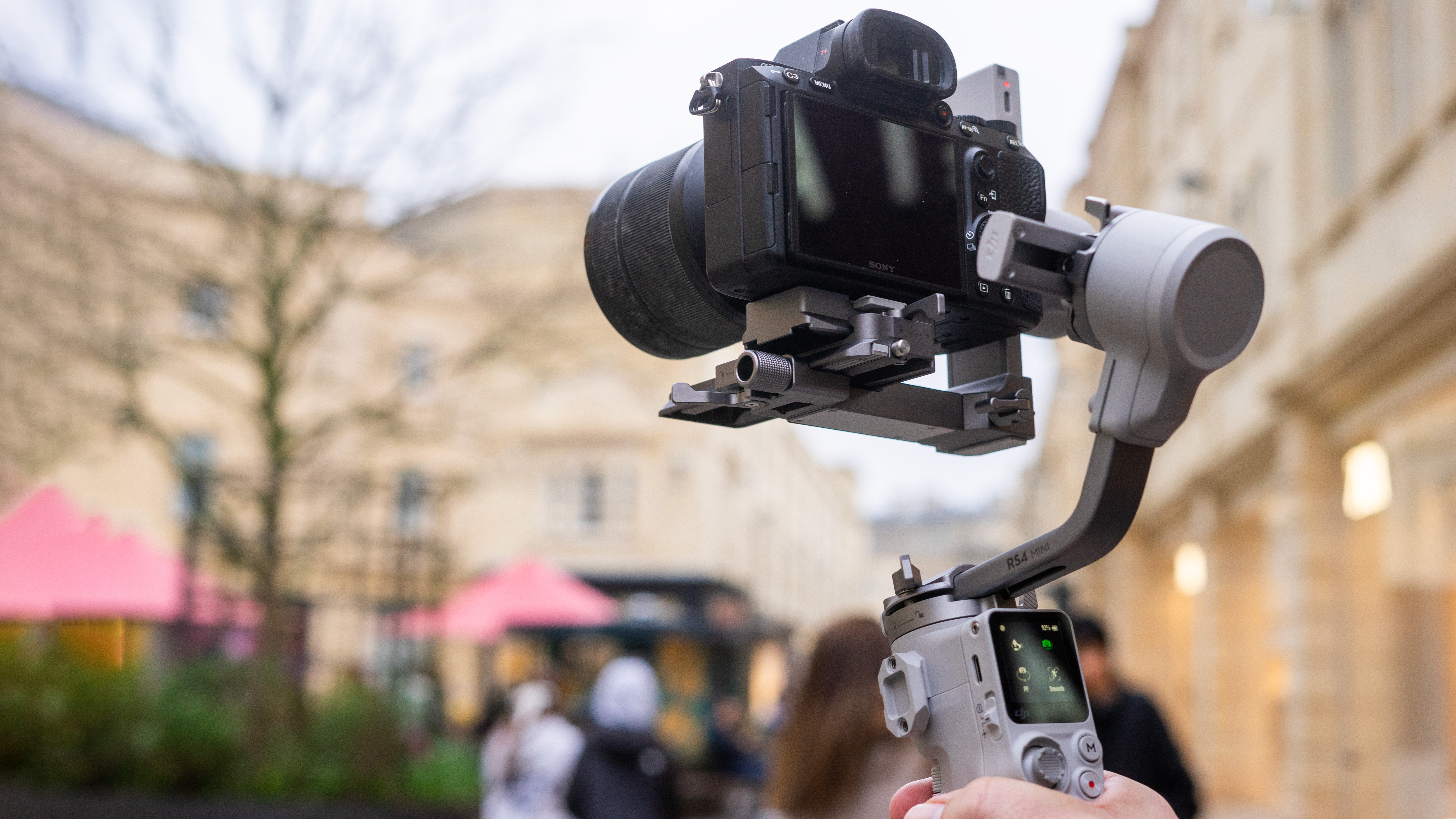
Build and handling
The RS 4 Mini is a bit of a visual surprise – a light-colored gray featured in the design alongside the aluminum alloy is very coherent. Personally, I think this color feels a tiny bit less 'professional' than the all-black of the previous edition, but that's really looking for problems!
The best camera deals, reviews, product advice, and unmissable photography news, direct to your inbox!
Beyond that, though, everything feels a lot better. Lifting it out of the box, you see the gimbal motors, and it's immediately apparent that you're holding a serious product.
Either side of the 1.4-inch touchscreen is a physical mode switch, which makes for very quick, natural mode switching.
The tripod base screws in and out with a standard thread. The quick-release plate is easily attached to your camera's tripod thread then (after a slight fiddle the first time if you've never used a gimbal before) you're quickly ready to shoot.
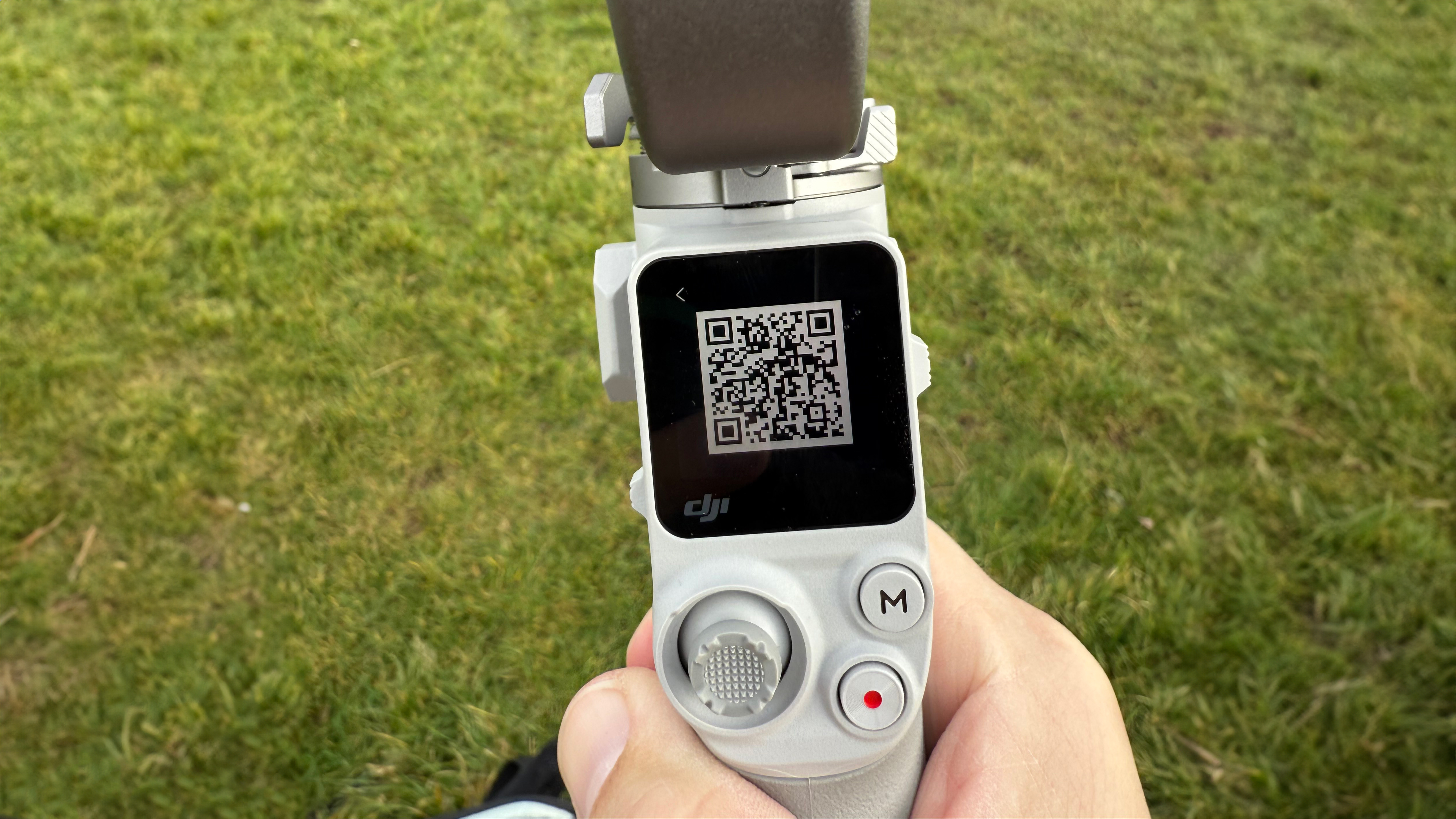
On the subject of first-time irritations, the gimbal will insist you download the Ronin app and pair to a phone within 5 uses. This isn't a bad thing, per se, but I never like taking orders from devices and it might be inconvenient in the field (though it does at least display the QR code on the screen to make the irritation as painless as possible).
Connecting the AI module is simple and reassuring, and the whole rim around the sensor turns to indicate a subject lock. Gesture control will activate this.
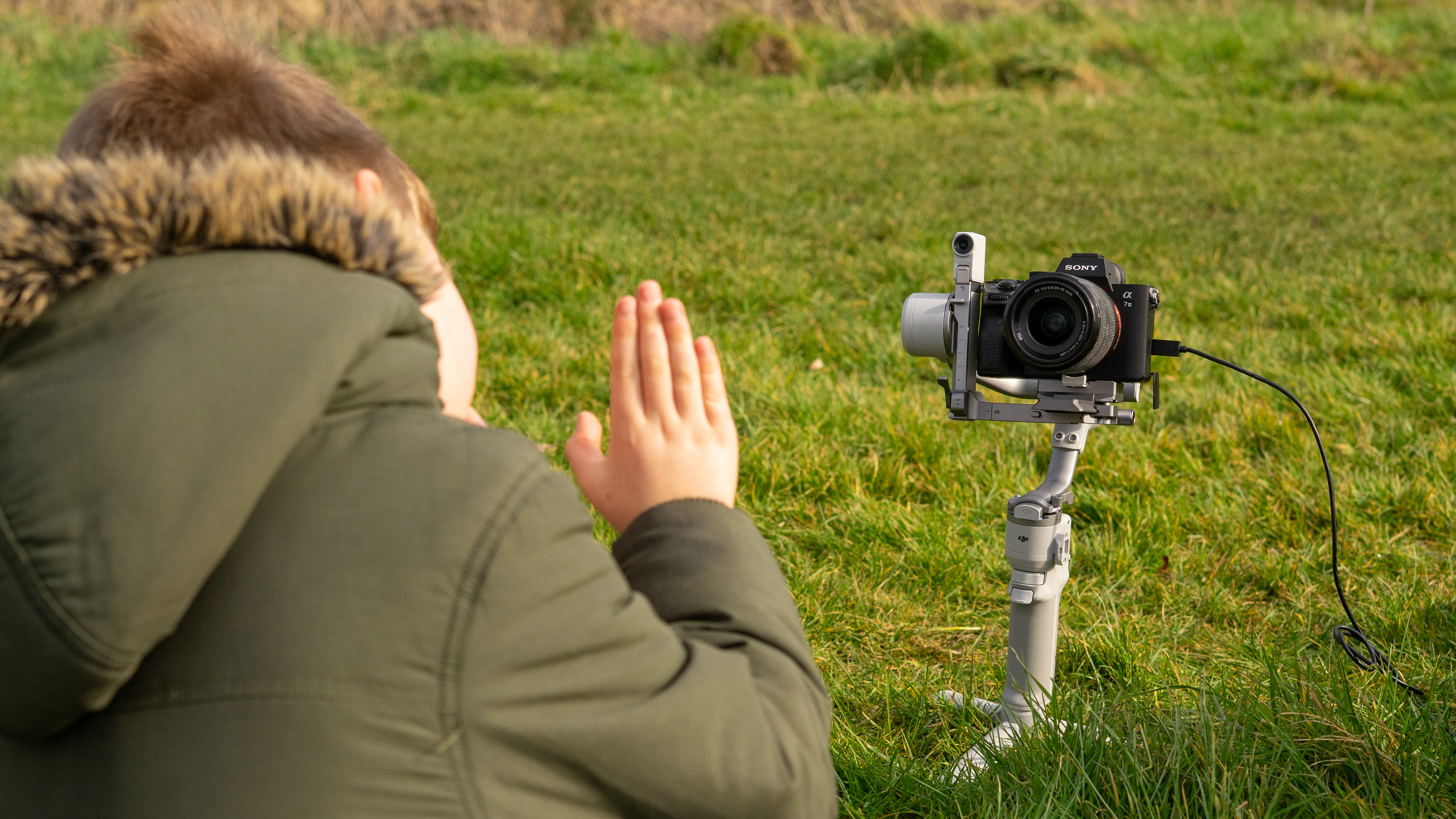
Subject tracking
Performance
The screen is very responsive, and DJI have managed to use the 1.4-inches well so I never felt controls were too small. You'll need it because of the aforementioned compulsory setup but, to be fair, this is just DJI's way of making sure you use all the features. Probably.
Gimbals like this still need to be balanced, which takes a few moments (several more the first time you do it, but this is a task that becomes second nature). The arrival of Teflon coating means sliding the parts into place is all the easier than before, and the locks are satisfying and trustworthy.
Switching to vertical is now much easier than before – you can now reposition the camera without detaching and remounting the plate. Social creators rejoice!
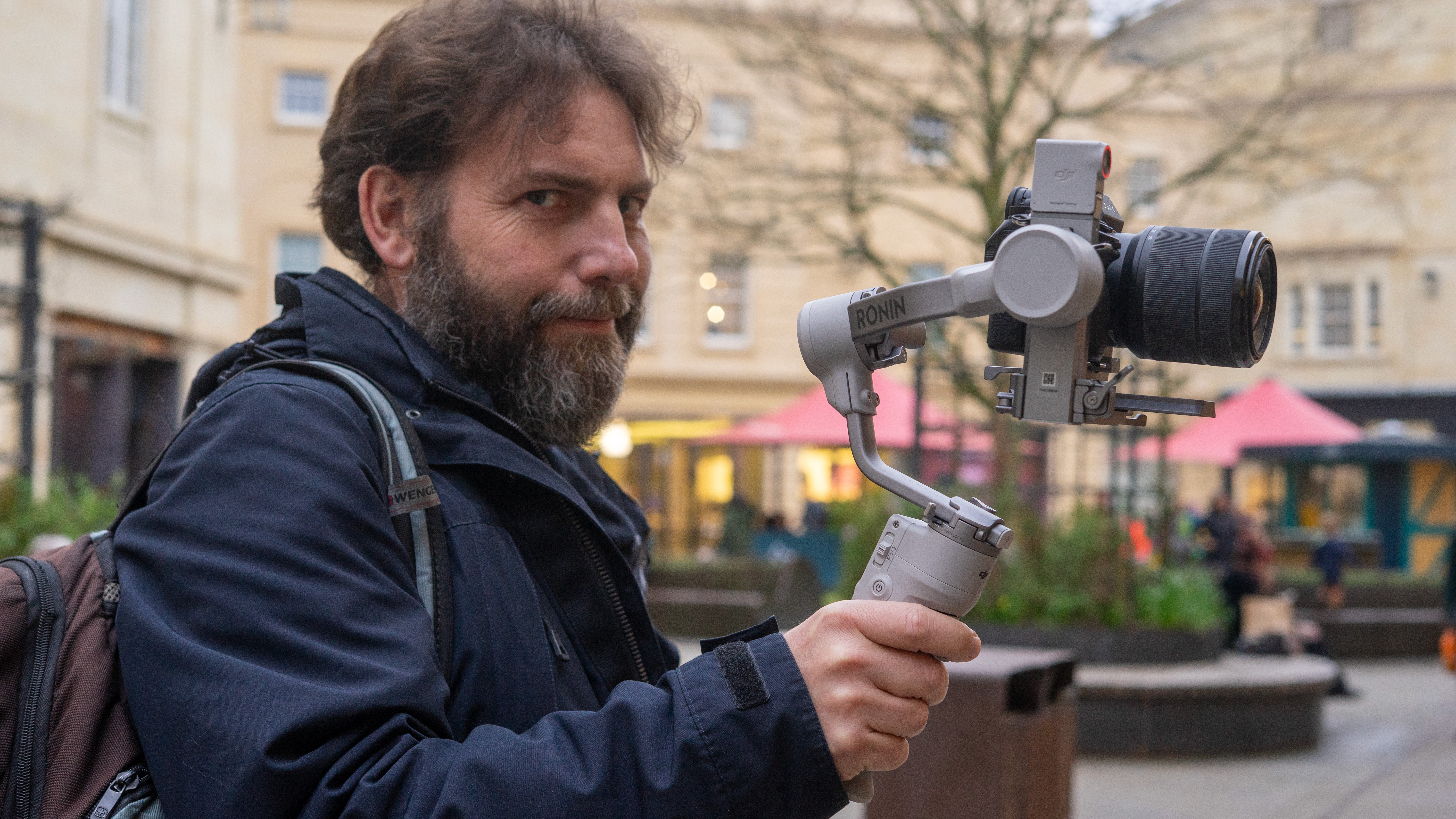
Overall Review
The DJI RS4 Mini is not the cheapest camera gimbal – especially if you're only thinking of using it with your phone. DJI themselves can help you out there for a significantly smaller investment. Despite the 'Mini' moniker, this is now a premium product, limited only by its maximum payload of around 2kg, which is still enough for most workaday mirrorless cameras and lenses.
Personally, given the investment for the device, I find it a bit irksome that the Intelligent Tracking Module is an additional cost. I imagine it'd be simpler and cut down on some costs to make one version of the device with the sensor folded in, but there may be some users for whom the potential $69 / £59 / AU$99 (or, presumably, slightly less) is worth saving. If there are, well done to you, but you're missing out – I'd strongly urge you to add this on day one.
Less useful, in my view, is the DJI RS 4 Mini Phone Holder – better to use a phone in a smaller dedicated phone device like DJI's excellent Osmo Mobile 7, since it is more discreet. But it's an option if you're gonna do both and your budget is stretched.
Whether you're shooting run-and-gun at a wedding or making pop videos, I found it easy to understand DJI's "next gen" claims simply because of the locking mechanisms; this is a marked improvement on bringing convenience and flexibility to the RS 3 Mini (a device which already contributed to smooth footage).
Features ★★★★★ | With the option of subject tracking, phone or camera use, and pro feeling features like automatic axis locks, this feels very premium. |
Design ★★★★★ | Some might argue that design and gimbals are anathema – they're a slightly irritating accessory at the best of times – but this is about as thoughtful as it comes while retaining flexibility. |
Performance ★★★★☆ | So long as you're not taking out the heaviest lenses, then this will serve you well. |
Value ★★★★☆ | If you're looking at a system which can (probably) tackle your camera with a typical lens AND your phone, then this is great value. It's frustrating that the subject tracking module isn't bundled at the cheapest price, but that is tech for you! |
How I tested the RS 4 Mini
I tested the RS 4 Mini over a couple of weeks in different locations. For the most part I used my Sony A7 III camera, and my iPhone 16 Pro Max.
DJI provided me with the Combo kit and the Phone Case to test.

With over 20 years of expertise as a tech journalist, Adam brings a wealth of knowledge across a vast number of product categories, including timelapse cameras, home security cameras, NVR cameras, photography books, webcams, 3D printers and 3D scanners, borescopes, radar detectors… and, above all, drones.
Adam is our resident expert on all aspects of camera drones and drone photography, from buying guides on the best choices for aerial photographers of all ability levels to the latest rules and regulations on piloting drones.
He is the author of a number of books including The Complete Guide to Drones, The Smart Smart Home Handbook, 101 Tips for DSLR Video and The Drone Pilot's Handbook.
You must confirm your public display name before commenting
Please logout and then login again, you will then be prompted to enter your display name.
